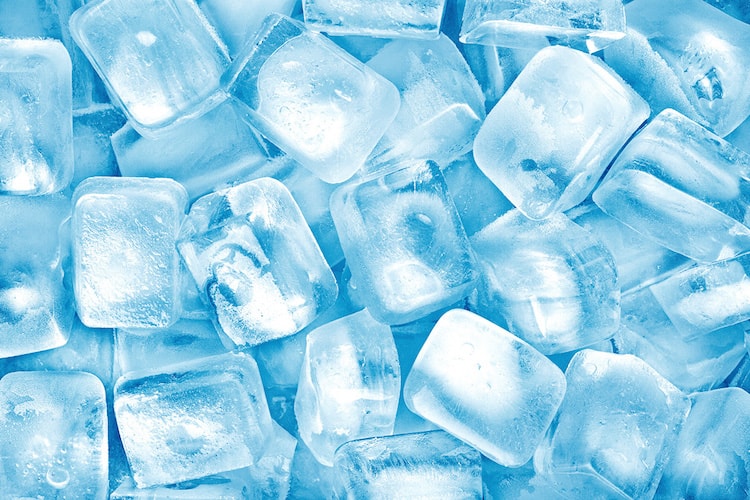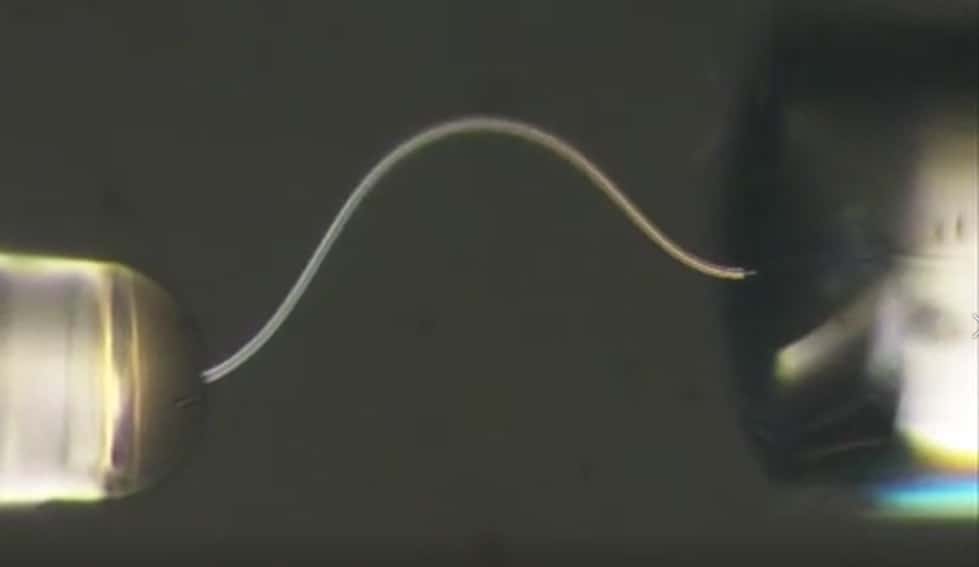Scientists in China and the US have created extremely flexible and elastic microfibres from ice. These fibres, which defy the usual rigid and brittle nature of ice, exhibit excellent optical quality and have mechanical properties that are near ice’s fundamental limits. They could be used for optical applications, environmental sensors and to study ice physics, the researchers claim.
Limin Tong, at Zhejiang University in China, and his colleagues have been working on optical microfibres for a couple of decades. Typically, these microfibres are made from silica glass, purified from natural minerals such as sand, but as Tong tells Physics World, “we’re always exploring new opportunities in microfibres”.
Like the sand used for silica, ice – or water – is extremely abundant on Earth. It is also clear and transparent, so the researchers wondered if it could be made into optical fibres. They also thought, Tong explains, that as many of the physical behaviours and properties of ice are poorly understood, ice microfibres could be good for exploring ice physics.
In their latest research, published in Science, the researchers grew multiple ice microfibres using a technique known as electric field-enhanced growth. They applied a 2000 V charge to the tip of a tungsten needle in a cold chamber at –50°C. Single ice microfibres then grew along the electric field direction from the needle tip. These single-crystal microfibres were generally a few micrometres in diameter, but ranged from 10 µm to less than 800 nm.
The microfibres were highly flexible, could be easily bent and readily returned to their original form. The team found that the fibres’ maximum elastic strain increased as the temperature dropped. At −70 °C, an ice microfibre with a diameter of 4.7 µm could be bent into a curve with a radius of 63 µm, suggesting an elastic strain of around 4.6%. When the temperature was lowered to −150 °C, the maximum elastic strain increased to about 10.9%, allowing a 4.4-µm-diameter microfibre to be bent almost into a circle with a radius of 20 µm. These strains are near the theoretical elastic limit of ice of roughly 15%.
When the researchers shone light into one end of the ice microfibres, they observed an ultralow optical loss – of a similar magnitude to state-of-the-art on-chip waveguides. After further analysis, they concluded that the fibres could potentially be used as flexible waveguides with much lower loss of light in the visible spectrum than other waveguides.
Cool and ultraclear
Tong tells Physics World that the need to keep the fibres below –30 °C is not a big issue. “Many other low-temperature technologies, such as high-temperature superconductors and quantum calculation, usually require a temperature much lower than this,” he explains.
According to the researchers, the microfibres’ exceptional mechanical properties and optical quality can be attributed to their lack of defects. Electron and ion beam microscopy showed that these single-crystal ice microfibres had very smooth surfaces and an extremely uniform cross section along their entire length.
The team believes that such ice microfibres could be leveraged to create environmental sensors, to study pollution on ice, environmental changes and structural variation, for example. Tong explains that their superior optical properties makes the microfibres extremely sensitive to changes in light transmission caused by surface changes, such as the adsorption of pollution particles.

Machine learning teases out differences in high-pressure ice phases
As well as optical applications, the fibres could also be used to study ice physics. For example, the researchers found that when bent sharply, the fibres transitioned from the usual hexagonal crystal structure of ice to a rhombohedral crystal structure. This could allow the study of ice-phase transitions, not just from hexagonal to rhombohedral, but also through some of the other almost 20 known crystalline phases of ice.
Tong says that the team is now trying to improve the experimental setup to grow better ice microfibres and push towards the limits of their mechanical and optical properties.
